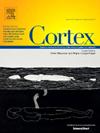Allocation of spatial attention in human visual cortex as a function of endogenous cue validity
IF 3.2
2区 心理学
Q1 BEHAVIORAL SCIENCES
引用次数: 0
Abstract
Several areas of visual cortex contain retinotopic maps of the visual field, and neuroimaging studies have shown that covert attentional guidance will result in increases of activity within the regions representing attended locations. However, little research has been done to directly compare neural activity for different types of attentional cues. Here, we used fMRI to investigate how retinotopically-specific cortical activity would be modulated depending on whether we provided deterministic or probabilistic spatial information. On each trial, a four-item memory array was presented and participants' memory for one of the items would later be probed. Critically, trials began with a foveally-presented endogenous cue that was either 100% valid (deterministic runs), 70% valid (probabilistic runs), or neutral. By dividing visual cortex into quadrant-specific regions of interest (qROIs), we could examine how attention was spatially distributed across the visual field within each trial, depending on cue type and delay. During the anticipatory period prior to the memory array, we found increased activation at the cued location compared to noncued locations, with surprisingly comparable levels of facilitation for both deterministic and probabilistic cues. However, we found significantly greater facilitation on deterministic relative to probabilistic trials following the onset of the memory array, with only deterministic cue-related facilitation persisting through the presentation of the probe. These findings reveal how cue validity can drive differential allocations of neural resources over time across cued and noncued locations, and that the allocation of attention should not be assumed to invariably scale alongside the validity of a cue.
内源性线索效度对人视觉皮层空间注意分配的影响
视觉皮层的几个区域包含视野的视网膜定位图,神经成像研究表明,隐蔽的注意力引导将导致代表被注意位置的区域的活动增加。然而,很少有研究直接比较不同类型的注意力线索的神经活动。在这里,我们使用功能磁共振成像来研究视网膜特异性皮质活动如何根据我们提供的确定性或概率空间信息进行调节。在每次试验中,研究人员都会向参与者展示一个包含四个项目的记忆阵列,然后对其中一个项目的记忆进行测试。关键的是,试验从中央凹呈现的内源性线索开始,这些线索要么100%有效(确定性运行),要么70%有效(概率运行),要么中性。通过将视觉皮层划分为象限特定感兴趣区域(qroi),我们可以研究每次试验中注意力在空间上是如何分布的,这取决于线索类型和延迟。在记忆阵列之前的预期期间,我们发现与没有提示的位置相比,提示位置的激活增加了,对于确定性和概率提示的促进水平惊人地相似。然而,我们发现,在记忆阵列开始后,确定性试验相对于概率试验有更大的促进作用,只有确定性线索相关的促进作用通过探针的呈现持续存在。这些发现揭示了线索有效性如何随着时间的推移驱动神经资源在有线索和没有线索的地方的不同分配,并且不应该假设注意力的分配总是随着线索的有效性而扩大。
本文章由计算机程序翻译,如有差异,请以英文原文为准。
求助全文
约1分钟内获得全文
求助全文
来源期刊

Cortex
医学-行为科学
CiteScore
7.00
自引率
5.60%
发文量
250
审稿时长
74 days
期刊介绍:
CORTEX is an international journal devoted to the study of cognition and of the relationship between the nervous system and mental processes, particularly as these are reflected in the behaviour of patients with acquired brain lesions, normal volunteers, children with typical and atypical development, and in the activation of brain regions and systems as recorded by functional neuroimaging techniques. It was founded in 1964 by Ennio De Renzi.
 求助内容:
求助内容: 应助结果提醒方式:
应助结果提醒方式:


